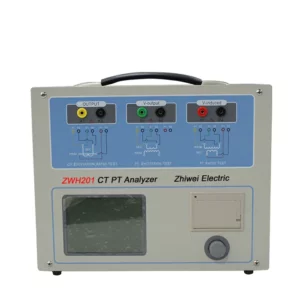How does the choice of indicator impact the accuracy of ct testing?
In CT (Current Transformer) testing, the choice of indicator, or more commonly referred to as the secondary burden, can have a significant impact on the accuracy of the testing process. The secondary burden refers to the load or impedance connected to the secondary winding of the CT during testing.
Here’s how the choice of indicator impacts CT testing accuracy:
- Load Impedance Matching: The indicator, or secondary burden, should match the expected load impedance of the system where the CT is installed. If the secondary burden does not match the actual load impedance, inaccuracies can occur in the CT’s performance measurements. For accurate testing, the burden should replicate the impedance characteristics of the system under normal operating conditions.
- Measurement Accuracy: The secondary burden affects the CT’s ability to accurately reproduce the primary current signal on the secondary side. A mismatched burden can introduce errors in the measurement of current and affect the CT’s accuracy in transmitting current information to protective relays or monitoring systems.
- Saturation and Overloading: Choosing an inappropriate indicator burden can lead to CT saturation or overloading during testing. Saturation occurs when the CT’s core becomes magnetically saturated due to excessive current, resulting in distorted output signals and inaccurate measurements. Overloading happens when the CT is subjected to higher currents than its rated capacity, leading to potential damage and inaccurate readings.
- Burden Tolerance: The indicator burden should have a tolerance that is within acceptable limits for the CT’s accuracy class. Different CTs have different accuracy classes, and the indicator burden should be selected accordingly to ensure that the CT meets its specified accuracy requirements.
- Frequency Response: ct testing The choice of indicator can also impact the frequency response of the CT. Some burdens may introduce impedance characteristics that affect the CT’s ability to accurately measure high-frequency currents or transient signals, particularly in applications where fast response times are crucial.
- Testing Standards Compliance: The selection of the indicator should comply with relevant testing standards and guidelines, such as those provided by IEEE, IEC, or local regulatory bodies. These standards often specify the acceptable burden values and requirements for CT testing to ensure accurate and reliable performance.
Overall, choosing the appropriate indicator burden is essential for ensuring the accuracy, reliability, and performance of CT testing. Proper matching of the burden to the system’s load impedance, adherence to CT accuracy class requirements, consideration of saturation and overloading limits, and compliance with relevant standards are all critical factors in achieving accurate CT measurements.
